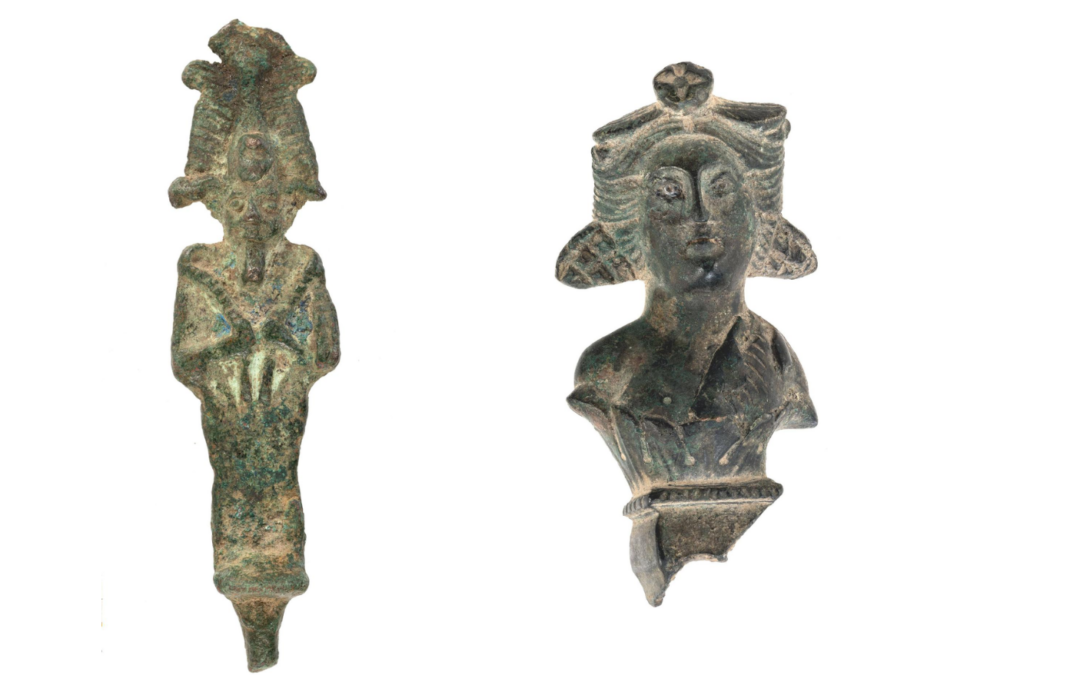Bronze figurines of the Egyptian and Roman deities Osiris and Bacchus that were discovered in eastern Poland last year, and which were initially believed to be from the 19th century, have now been dated back to ancient Egypt and Rome.
The heritage conservator for Lublin province has confirmed that the figure of Osiris is an original from the 1st millennium BC, while the depiction of Bacchus is from the 1st century AD.
The finds were made in May 2022 in the grounds of a stately home that belonged to the Kleniewski family, local landowners. That led to initial speculation that the figures were part of their interior decoration from when the home was built in the 19th century.
However, the unprecedented nature of the discovery meant there were always doubts about this theory and now experts from the National Museum in Lublin and the University of Warsaw’s archaeology department have confirmed that the objects are in fact originals from antiquity.
Łukasz Miechowicz of the Institute of Archeology and Ethnology of the Polish Academy of Sciences told the Polish Press Agency (PAP) that the pieces were part of the wealthy Kleniewski family’s private collection of antiquities that were stored at their residence in Kluczkowice.
The Kleniewskis were forced to quickly leave their home in 1942, when the Nazi German occupiers seized the property and used it for the treatment of wounded Wehrmacht soldiers.
That has led Miechowicz to speculate that the figurines were either hidden by the family during the war to safeguard them from the Germans or after the war when the palace was plundered. A local resident recently also found a 17th-century sword buried nearby that also was likely part of the family’s collection.
Over 400 items, most likely hidden by Jews during WWII, have been discovered during renovation work in Łódź.
Among them were two hanukkiahs that, eight decades after being buried, were used by the city during its celebration of Hannukah last month https://t.co/KlCr4ORPJE
— Notes from Poland 🇵🇱 (@notesfrompoland) January 9, 2023
Miechowicz believes that the Osiris figurine was likely bought by Maria Kleniewska during her four-month stay in Egypt in 1904, as recounted in her memoirs.
Meanwhile, the Bacchus bust may have been found in a grave discovered in 1906 that dated back to the time of Przeworsk culture that existed in what is now Poland between the 3rd century BC and 5th century AD, says Miechowicz.
The bust was likely part of a tripod used for ceremonial purposes, similar to an intact example that is currently on display in the British Museum in London after being uncovered during the 18th century near Mount Vesuvius.
The artefacts will now be incorporated into the collection of the National Museum in Lublin.
Artefacts believed to be over 2,500 years old – an axe and two bronze hoop ornaments – have been discovered by a group of history enthusiasts in northern Poland https://t.co/XTWZ9SjDGg
— Notes from Poland 🇵🇱 (@notesfrompoland) March 29, 2023
Main image credit: Łukasz Miechowicz, Lubelski Wojewódzki Konserwator Zabytków / Facebook

Anna Hackett is an assistant editor at Notes from Poland. She is a recent graduate of European Studies from Trinity College Dublin and has had previous journalistic experience with the Irish Independent News & Media group.




















